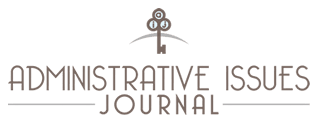
Abstract
In this article, we describe the palpable changes of a paradigm shift in higher education. Although this shift has been described and/or predicted elsewhere, we affirm the transition from over 30 years of collective teaching and administrative experience at a predominantly undergraduate institution (PUI) with historical roots as a state normal school. In many respects, the anomalies that Thomas Kuhn predicted in such a transition are all the more evident given our institution’s history. These anomalies include (but are not limited to) 1) the state of knowledge “ownership” (as mediated by the internet), 2) student-centered (vs. faculty-centered) educational practices, 3) the transition in student approaches to learning (primarily to technology), 4) organizational changes (including administrative ones) and 5) the change in public funding patterns for universities. We conclude that research-intensive and teaching-intensive universities are converging on a more process-oriented approach to education with less emphasis on prescriptive outputs while assuming a greater role in developing their own funding autonomy in response to the dwindling number of dollars taken in by public universities today. We recommend to readers a more rapid and explicit recognition of this paradigm shift, before we lose our existing educational missions to the consequences of this transition between paradigms.
Recommended Citation
Cunliff, Ed and Barthell, John
(2011)
"Anomalies in the System: Is a New Educational Paradigm Upon Us?,"
Administrative Issues Journal: Vol. 1:
Iss.
3, Article 6.
Available at:
https://dc.swosu.edu/aij/vol1/iss3/6
Included in
Health and Medical Administration Commons, Higher Education Administration Commons, Public Administration Commons
Please consider contributing an article to Administrative Issues Journal, our submission policy: http://www.swosu.edu/academics/aij/guidelines.aspx
